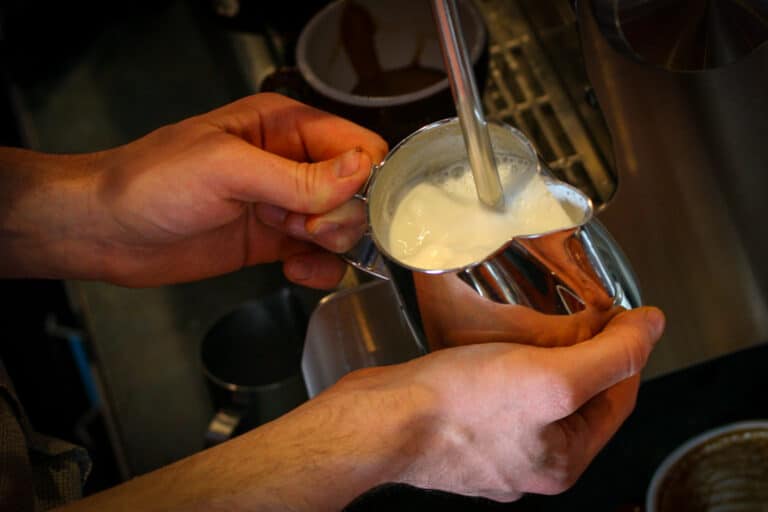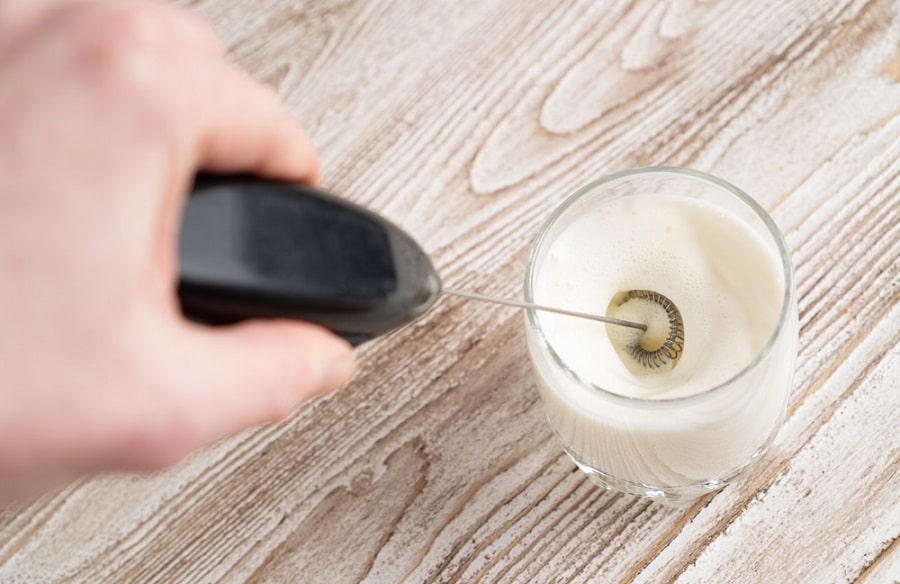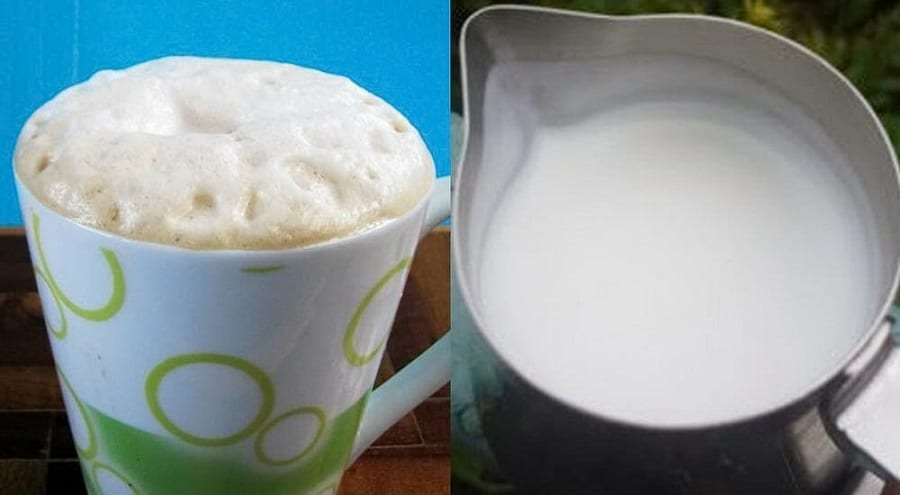Are you wondering whether steamed milk and frothed milk are the same? Learn about the differences between steamed milk and frothed milk, how to make them, and tips for achieving the perfect amount of milk foam in this guide.
If you are a coffee shop regular or a home barista, you've probably used the terms “steamed milk” and “frothed milk.” But what do these terms really mean? Is one method better than the other? And how do you achieve the perfect results with each?
In this guide, we'll take a closer look at frothed milk and steamed milk. We'll explore the differences in texture and appearance. We will also offer some tips on how to achieve the perfect result with each method.
What is Steamed Milk?

Steamed milk refers to milk that has been heated by using a steam wand. The steam wand is typically attached to an espresso machine. It works by forcing hot steam through the milk, creating tiny bubbles, often referred to as microfoam.
The end result is a smooth and velvety milk texture that is perfect for making lattes and cortados. The microfoam produced is used by baristas to create latte art. If you don’t have an espresso machine, you can also use stand-alone frothers to steam your milk.
What is Frothed Milk?

Frothed milk refers to milk that has been aerated by placing a steam wand above the surface of the milk to produce a bubblier, airy foam. The goal is to create as much foam as possible while maintaining a smooth, creamy texture.
Frothed milk is often used to make cappuccinos, where it is layered on top of an espresso shot to create a creamy and delicious drink. Apart from an espresso machine steam wand, you can use a manual frother, an electric milk frother, or a handheld frothing wand to froth your milk.
Differences Between Steamed Milk and Frothed Milk
While both steamed milk and frothed milk are used to make coffee, there are several differences between the two. These differences include:
- Texture: Steamed milk has a smooth and velvety texture, while frothed milk has a light and airy texture.
- The method used: Steamed milk is created by heating the milk with a steam wand, while frothed milk is created by incorporating air into the milk using a frothing wand.
- Appearance: Steamed milk has a thin layer of microfoam on top, while frothed milk has a thick layer.
- Temperature: Steamed milk is heated to 160-180 degrees Fahrenheit, while frothed milk is heated to 120-140 degrees Fahrenheit.
How to Make Steamed Milk?
Requirements
- Milk
- Steam wand
- Steaming pitcher
Instructions
Step 1: Pour cold milk into the steam pitcher.
Step 2: Position your espresso machine's steam wand just below the surface of the milk.
Step 3: Turn on the steam wand and wait for the milk to foam.
Step 4: Move the steam wand further below the surface.
Step 5: Hold the steaming pitcher at a slight angle and try to move it in a circular motion to spin the milk.
Step 6: Once the milk is foamy, turn off the steam wand and remove the pitcher from the wand.
Step 7: Tap the steaming pitcher lightly on a flat surface to get rid of large bubbles.
Step 8: Swirl the milk gently to distribute the foam throughout the milk.
Step 9: Pour the steamed milk into your espresso shot.
How to Make Frothed Milk?
Requirements
- Milk
- Frothing wand
- Frothing pitcher
Instructions
Step 1: Pour cold milk into the frothing pitcher.
Step 2: Heat the milk to around 120-140 degrees Fahrenheit.
Step 3: Cool the milk to room temperature. Wait until you see small bubbles forming around the wall of the frothing pitcher.
Step 4: Put the frothing wand in the milk and turn it on.
Step 5: Move the frothing wand up and down to form foamy bubbles.
Step 6: Once the milk is foamy, turn off the frothing wand.
Step 7: Remove the frothing wand from the milk.
Step 8: Tap the frothing pitcher lightly on a flat surface to remove large air bubbles.
Step 9: Swirl the milk gently to distribute the foam throughout the milk.
Step 10: Pour the frothed milk gently into your espresso shot.
Benefits of Steamed Milk and Frothed Milk

Both steamed milk and frothed milk have their unique benefits. Here are some benefits of each:
Benefits of Steamed Milk
- Steamed milk has a smooth and velvety texture.
- Steamed milk can be used in a variety of espresso-based drinks, from lattes to cortados.
- Steamed milk can help break down lactose, making it easier to digest for persons with lactose intolerance.
Benefits of Frothed Milk
- Frothed milk creates a thick layer of foam on top of the milk. The thick foam is essential when making coffee drinks like cappuccinos.
- Frothed milk is a good source of protein.
- A thick layer of foam created by frothed milk makes your drink look more visually appealing.
Downsides of Steamed Milk Vs. Frothed Milk
Here are some downsides of steamed milk and frothed milk:
Downsides of Steamed Milk
- Steamed milk does not produce as much foam as frothed milk, which can be a problem for those who prefer a thick layer of foam in their drinks.
- Steamed milk is always hot, thus making your drink too hot.
Downsides of Frothed Milk
- Frothed milk is best suited for certain drinks like cappuccinos and may not be suitable for drinks that do not require a thick layer of foam.
Tips for Getting the Perfect Milk Foam

- Use cold milk as cold milk froths better than hot milk.
- Use whole milk or half-and-half for the creamiest foam.
- Use a steam wand or a milk frother to create the perfect foam.
- Remove and wipe the wand immediately after heating.
- Fill the pitcher halfway to allow enough space for the milk to froth.
- Monitor the temperature with a thermometer to avoid overheating the milk.
Can You Froth Half and Half?
Half and half can be frothed and are regularly used in lattes. The higher fat content in half and half can make foaming more difficult, but when heated to 140 °F (60 °C) before frothing, the milk will foam more easily. So, next time you want to make a latte using half and half, remember to heat it first for a smooth and creamy froth.
Which Type of Milk Is Better for Your Coffee?
Choosing the right type of milk for your coffee depends on your taste preferences, texture preferences, health benefits, the type of coffee you're making, and any dietary restrictions you may have. By considering these factors, you can choose the perfect milk to complement your coffee and enhance your overall coffee-drinking experience.
- Consider the texture: While brewing coffee, the texture of the milk you choose plays an important role in deciding how your cup of joe will taste. If you're aiming for something thick and creamy, whole milk or cream is highly recommended. For a lighter-bodied coffee, skimmed or low-fat milk are a great option.
- Consider the health benefits: Picking the right type of milk can bring health advantages. If you're watching your calorie count, go for skim or low-fat milk; whereas, to get a good dose of calcium and vitamin D, opt for whole milk or cream.
- Consider the type of coffee you're making: Depending on what coffee beverage you choose, it should be accompanied by an appropriate type of milk. For instance, steamed milk is perfect for lattes, while frothed milk is best for cappuccinos. When it comes to espresso shots, they are best when served with a bit of steamed milk or cream.
- Consider dietary restrictions: If you have dietary sensitivities, like lactose intolerance, you may need to think of using other options such as almond, soy, or oat milk.
Summing Up
When it comes to choosing between steamed milk and frothed milk, the choice depends on your personal preference and the type of drink you want to make. Use steamed milk when you want your coffee to have a smooth and silky texture. However, if you are looking for a thick and creamy texture, frothed milk will be the best choice.
It is always best to experiment with both methods to find the perfect balance of texture and flavor for your coffee drink.